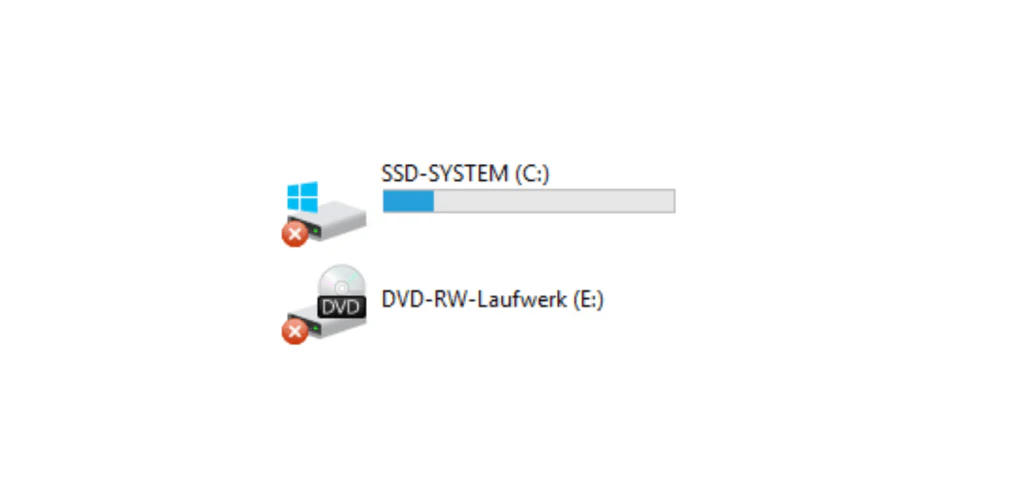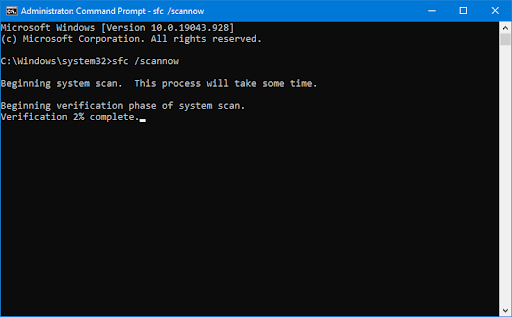Have you ever encountered a mysterious red “X” on your Windows folders? It can be alarming, especially when it appears on important directories. In this guide, we’ll uncover the reasons behind the red “X” and show you how to fix it.
🔍 What Does the Red “X” Mean?
The red “X” icon overlay usually indicates that something is wrong with file synchronization or accessibility. Common causes include:
- Issues with OneDrive or cloud sync.
- File or folder permission problems.
- Network drive disconnections.
- Corrupted system files or conflicts with third-party software.
These red “X” marks serve as warning signs that your files might not be backed up properly or could be inaccessible.
🛠️ Why It Matters
If left unresolved, you may risk losing access to important files or running into performance issues. Understanding what’s behind the red “X” empowers you to take action and regain full control over your digital workspace.

Causes Behind the Red “X” Sign
Ever spotted that annoying red “X” on your Windows folders or files? It’s rare but always inconvenient—like a red flag waving for attention. Here’s what might be going on:
🌐 1. Network-Related Issues
Think of it as a dropped Wi-Fi call. If your internet connection is unstable or disconnected, especially with services like OneDrive, the red “X” shows up to signal that your files aren’t syncing properly.
🔁 2. Synchronization Conflicts
It’s like two people trying to edit the same document at once. These sync conflicts happen when different versions of a file clash—causing the system to freeze up and slap a red “X” on the icon.
🔐 3. Storage or Permission Errors
Sometimes the issue is a lack of space or incorrect permissions. Your files may not have the green light to save, update, or sync—leading to that frustrating red symbol.
🧩 4. The Red “X” Mystery
While the red “X” can be a bit of a wildcard, it almost always signals that something is out of sync. Files may not update, open, or save correctly until the underlying issue is resolved.
🚨 5. Sync Error Indicator
Check the OneDrive icon in your system tray (next to the clock). If it also shows a red “X,” your cloud sync is most likely the culprit—and that’s where you should start troubleshooting.
Resolving the Red “X” Sign Issue
So you’ve spotted the infamous red “X” on your Windows files or folders—it’s annoying, but not unbeatable. Let’s fix it together step by step:
🔑 1. Log Into OneDrive and Start Syncing
That little red X or dash on the OneDrive icon? It’s trying to tell you: “Hey, you’re not logged in!”
Simply sign back into your OneDrive account to re-initiate syncing. Often, that’s all it takes to clear up the issue.
🩺 2. Run CHKDSK – The Digital Doctor
Think of CHKDSK as a checkup for your hard drive.
Here’s how to use it:
- Press Windows + X and select Command Prompt (Admin).
- Type:
chkdsk /f /rand press Enter.

- You might be prompted to schedule it for the next reboot—type Y and restart your computer.
This scan looks for disk errors and bad sectors that might be triggering the red “X.”
📂 3. Check for Corrupted Files
If the red “X” is hanging out in just one folder, a corrupted file could be to blame. Use Windows tools like SFC or DISM to scan and fix corrupted system files:
- Open Command Prompt (Admin) and type:
sfc /scannow
Let it do its thing.

🧼 4. Close Competing Sync Apps
Apps like Dropbox, Google Drive, or third-party sync tools can sometimes clash with OneDrive, especially if they’re trying to sync the same files.
Close any other syncing programs and restart your PC.
🌐 5. Let OneDrive Breathe
Using OneDrive in your browser? It’s best to log out or close the browser tab before troubleshooting. This avoids sync conflicts and gives OneDrive desktop a clear path to work.
Prevention and Maintenance
Congrats! You’ve tackled the red “X” and restored harmony to your digital files. But let’s not stop there—here are some smart habits to keep the red “X” from ever returning.
✅ Best Practices for a “No More Red X” Future
- Avoid funky characters in file names: Characters like
#,%,&, and[]can mess with file syncing—especially in OneDrive. Stick to simple, alphanumeric names. - Know your file types: Some file types aren’t supported by OneDrive. Double-check Microsoft’s list of restricted files to avoid sync issues.
- Save locally first: Especially when dealing with large files or sensitive data, always save to your local drive before syncing.
🧹 Regular System Maintenance Tips
Think of your system like a workspace—it works best when it’s clean and organized:
- Remove clutter: Delete unused apps, clean up downloads, and organize your folders regularly.
- Keep an eye on storage: Make sure you’re not running out of disk space—low storage can disrupt sync operations.
- Run disk cleanup tools: Use built-in tools like Disk Cleanup or Storage Sense to keep things tidy.
🔄 The Software Update Secret
- Update regularly: System updates often come with important bug fixes and sync improvements.
- Keep OneDrive current: Whether you’re using the desktop or web version, ensure OneDrive is up-to-date to avoid compatibility issues.
- Check for driver updates: Especially your network adapter and storage drivers—keeping them updated supports smoother sync processes.
Empowering Your Digital Experience
After resolving the frustrating red “X” error in Windows folders—often caused by OneDrive sync issues or network conflicts—it’s time to take your digital experience to the next level. By optimizing your file organization and customizing your system preferences, you can create a seamless and efficient workspace that boosts productivity and reduces stress.
Take Control of Folder Structure
Think of your file system like a neatly arranged library. Organize your digital files by creating clearly labeled folders for specific categories such as work documents, personal files, media, or project archives. This simple yet powerful strategy ensures you can instantly locate what you need, improving workflow and saving valuable time.
Boost Your File Organization Skills
To avoid future sync issues and enhance accessibility, name files and folders descriptively. For instance, instead of “Document1,” use “Budget_Report_Q1_2025.” Implementing subfolders within larger categories adds an extra layer of structure that makes data retrieval more intuitive and efficient.
Customize Windows for a Personalized Experience
Windows 10 and 11 offer a variety of settings to tailor your file navigation experience. From adjusting icon views to setting preferred folder defaults, a few tweaks can drastically improve usability. These customizations empower you to work more efficiently and reduce clutter across your system.
Final Thoughts
The red “X” icon in Windows is more than a nuisance—it’s a warning sign for file sync problems, permission issues, or corrupted directories. Now that you understand the root causes and how to fix them, take preventive steps like maintaining folder hygiene, updating OneDrive regularly, and keeping system permissions in check.
By applying these proven techniques, you’re not just fixing errors—you’re building a smarter, more reliable digital environment. Keep your files secure, your syncs smooth, and your folders organized for a truly empowered Windows experience.
One more thing
If you’re in search of a software company that embodies integrity and upholds honest business practices, your quest ends here at Ecomkeys.com. As a Microsoft Certified Partner, we prioritize the trust and satisfaction of our customers. Our commitment to delivering reliable software products is unwavering, and our dedication to your experience extends far beyond the point of sale. At Ecomkeys.com, we provide a comprehensive 360-degree support system that accompanies you throughout your software journey. Your trust is our foundation, and we’re here to ensure that every interaction with us is a positive and trustworthy one.

